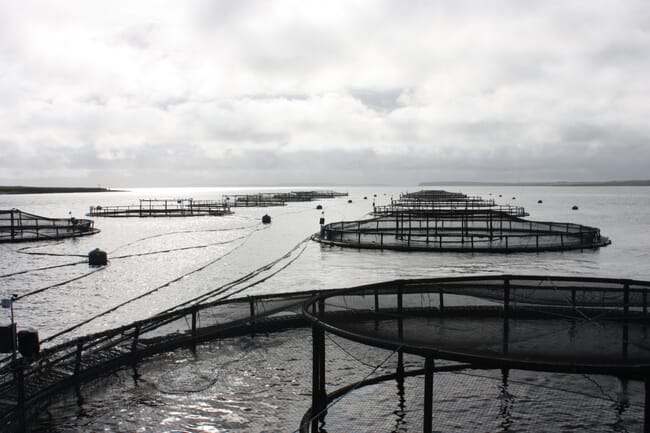A paper, published under the title Making mountains out of minnows by the Australia Institute today, notes that Tasmanian Government regularly describes the salmon farming sector as “critically important”, while trade unions have called it Tasmania’s “brightest economic prospect”.
However, the think tank notes: “With views like this, the relative cost to the environment imposed by the industry can be skewed. This is concerning, because economic data does not support the claims of the industry’s importance. Employment: The salmon industry is the 40th largest sector by employment in Tasmania, employing fewer than car repairs or child care. It employs about 1,500 people, or 0.6% of total employment in the state.”
They add that salmon aquaculture’s contribution to gross state product is a relatively modest 0.6 to 2.3 percent.

Production, income and taxes
The research reveals that from 2013 to 2018 the Tasmanian salmon industry sold 255,000 tonnes of fish, worth $3.8 billion. This revenue produced $416 million in taxable income, an approximation of profit. $64 million in tax was paid, equal to 2 percent of production value and 15 percent of taxable income.
They also note that “the industry has benefited from significant state and federal subsidies, with at least $9.3 million paid in the last two years,” and does not pay council rates on its marine leases, “putting it at an advantage compared to land-based industries”.
Intriguingly, the researchers also note that a change in the licencing regulation could generate up to $2 billion in additional government revenue.
The publication states: “When councils considered charging rates on marine leases, the Tasmanian parliament legislated to remove that power from them. Annual lease and licence fees are paid to the State Government, of approximately $923,000 for the entire industry. This represents 0.1% (one-thousandth) of the total farmgate production of the salmon industry in Tasmania, and 0.02% of total state revenue. Changing the current licensing regime to one similar to the Norwegian system could return between $707 million and $2 billion at government auction.”
"Tasmanian salmon companies have gone through a period of growth. This growth has not led to a commensurate growth in returns to the state government, or the communities that bare the environmental costs of the industry," they conclude.



